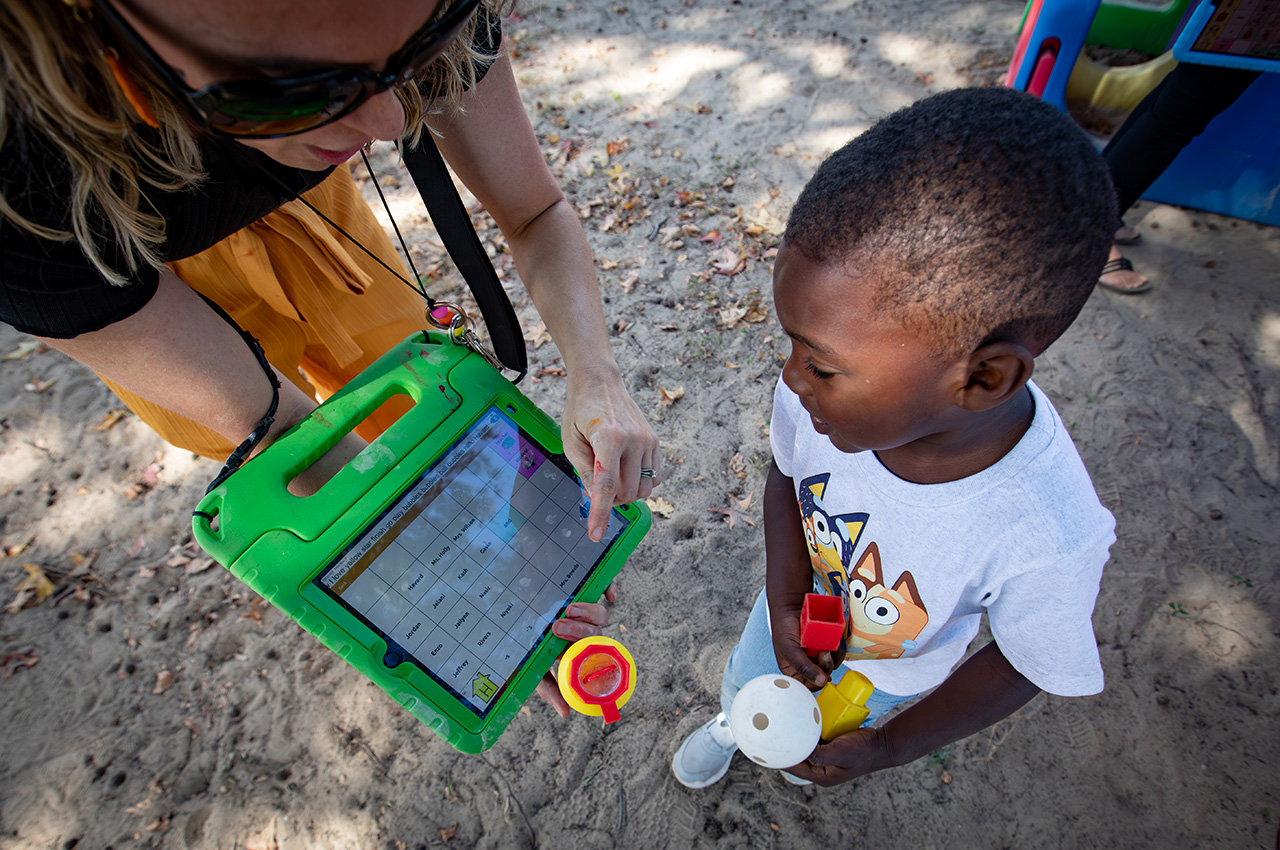Inside Elizabeth Havard’s pre-kindergarten classroom last year at Southside Primary Elementary, teacher Elizabeth Havard noticed one of her students was having a difficult morning.
- The child, Zaiden, seemed uncomfortable and upset. But unlike previous years, Zaiden had a way to express exactly what was bothering him.
Using his iPad, he navigated through the communication app to indicate he wanted to change out of his collared shirt – a request that would have been impossible for him to make just months earlier. After changing his clothes, Zaiden zoomed around the room, his entire demeanor transformed, finally comfortable and understood.
This interaction represents just one example of how technology is transforming the lives of students with autism at this small but mighty school in north Okaloosa County, where iPads and communication apps are breaking down barriers and giving non-verbal children a voice.
- “These children have so much to say,” Havard explains, “but they don’t necessarily have the neural pathways that you and I have to produce spoken speech at this time.”
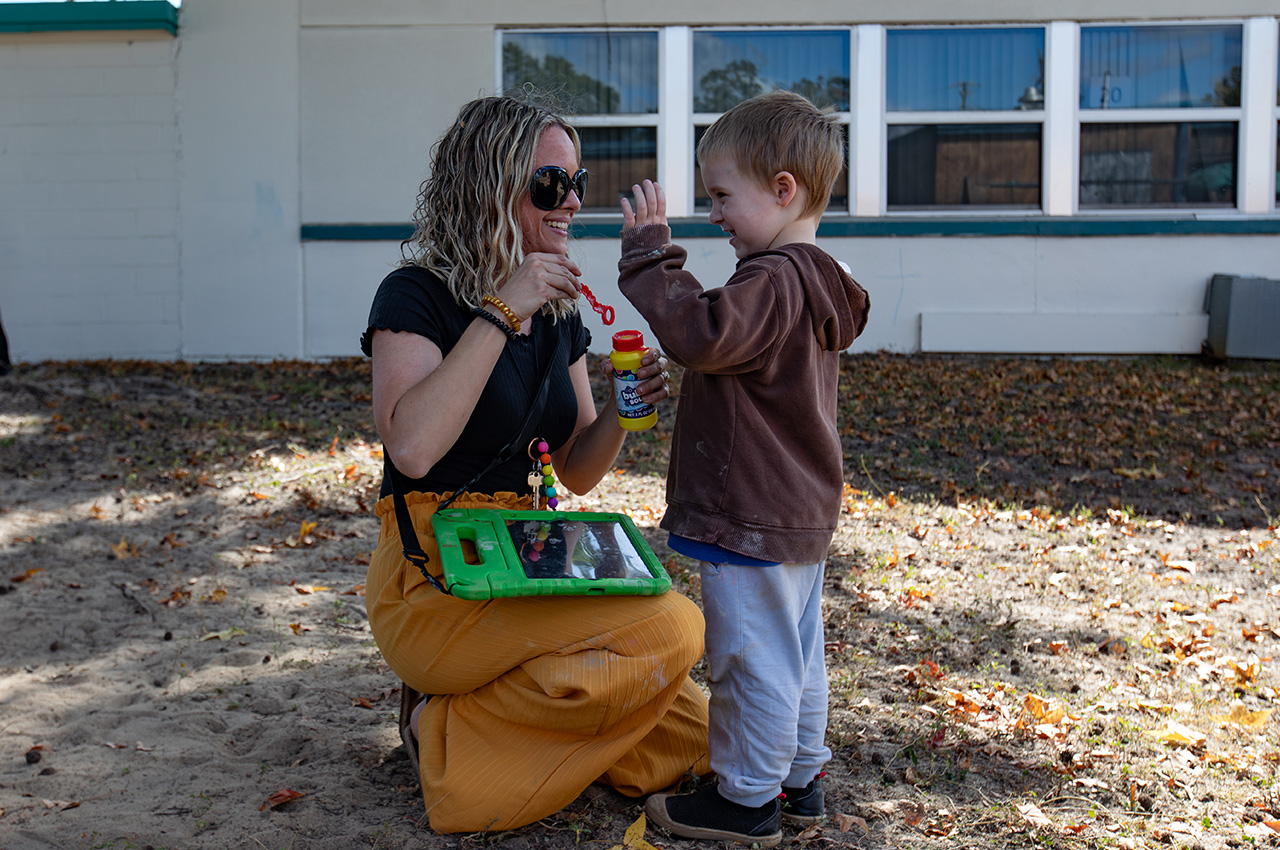
The school, which serves students from age three through second grade, began implementing iPads equipped with TouchChat, a communication app, about a year and a half ago. The results have been remarkable, according to Principal Amy Bowles, who oversees a unique educational environment that has grown from 167 students at the beginning of the school year to nearly 300.
Southside Primary stands apart as one of the district’s oldest schools, dating back to 1947. Originally serving as a traditional elementary school through fifth grade, it has evolved to become a specialized center for early childhood education, with a particular focus on students with disabilities.
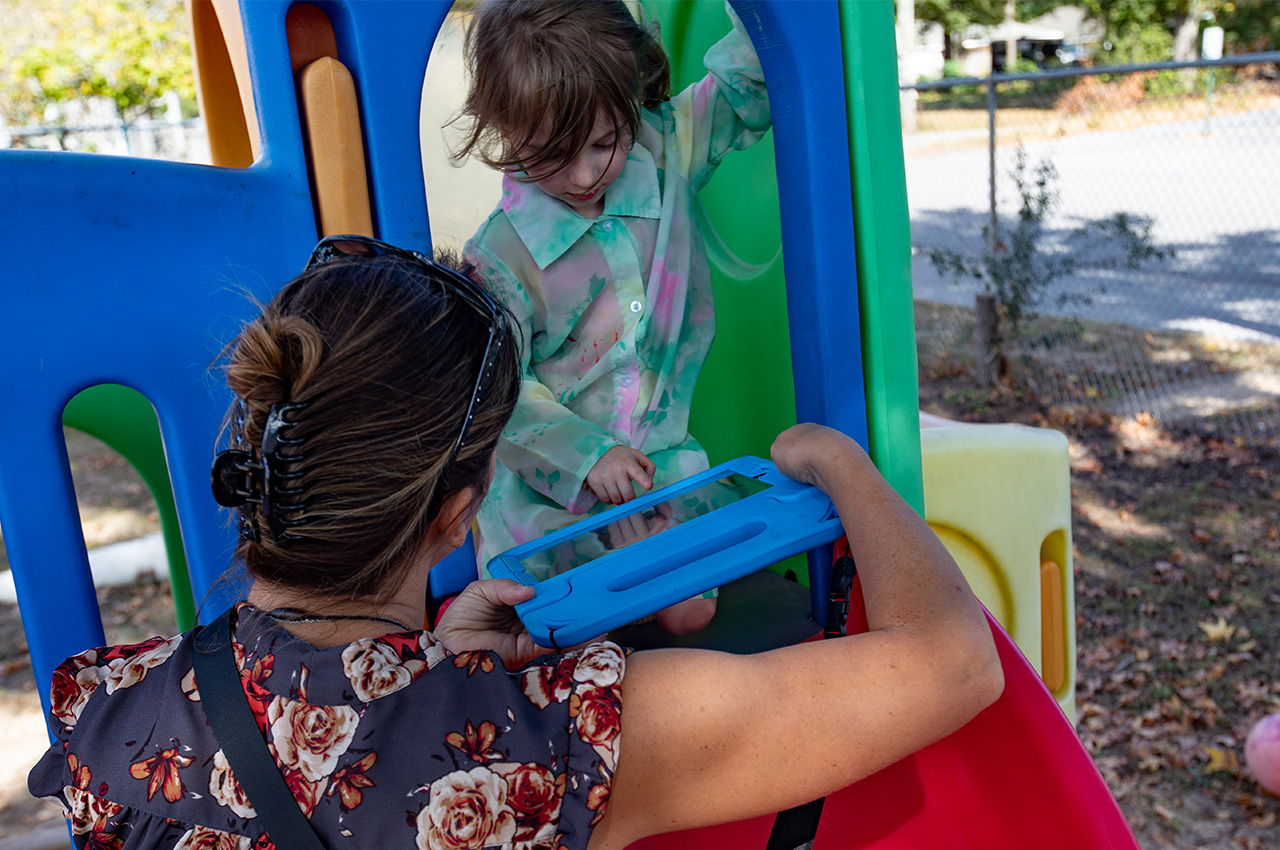
The school now houses 16 Pre-K D units for students with disabilities, eight voluntary pre-kindergarten (VPK) classes, and five elementary classrooms spanning kindergarten through second grade. Three of the VPK classes are “community classrooms,” where students with special needs learn alongside typically developing peers who serve as role models.
- “Early intervention is so important with our babies,” says Bowles. “If you don’t get them communicating their wants and needs at an early age, whether it’s through pictures or an assistive technology device or words, it’s hard.”
For Ashley Allen, whose son Zaiden attended Southside Primary for three years, the iPad has been transformative. Before having access to the device, Zaiden, who is largely non-verbal with just a few words like “mom,” “stop,” and “bye-bye,” would physically pull his mother to whatever he wanted in their house.
“Now Zaiden has the device and I can be anywhere in the house, and he will have the device say ‘eat Sun Chips,’ and I know exactly what he wants,” Allen says. “It’s been a real blessing, a game changer.”
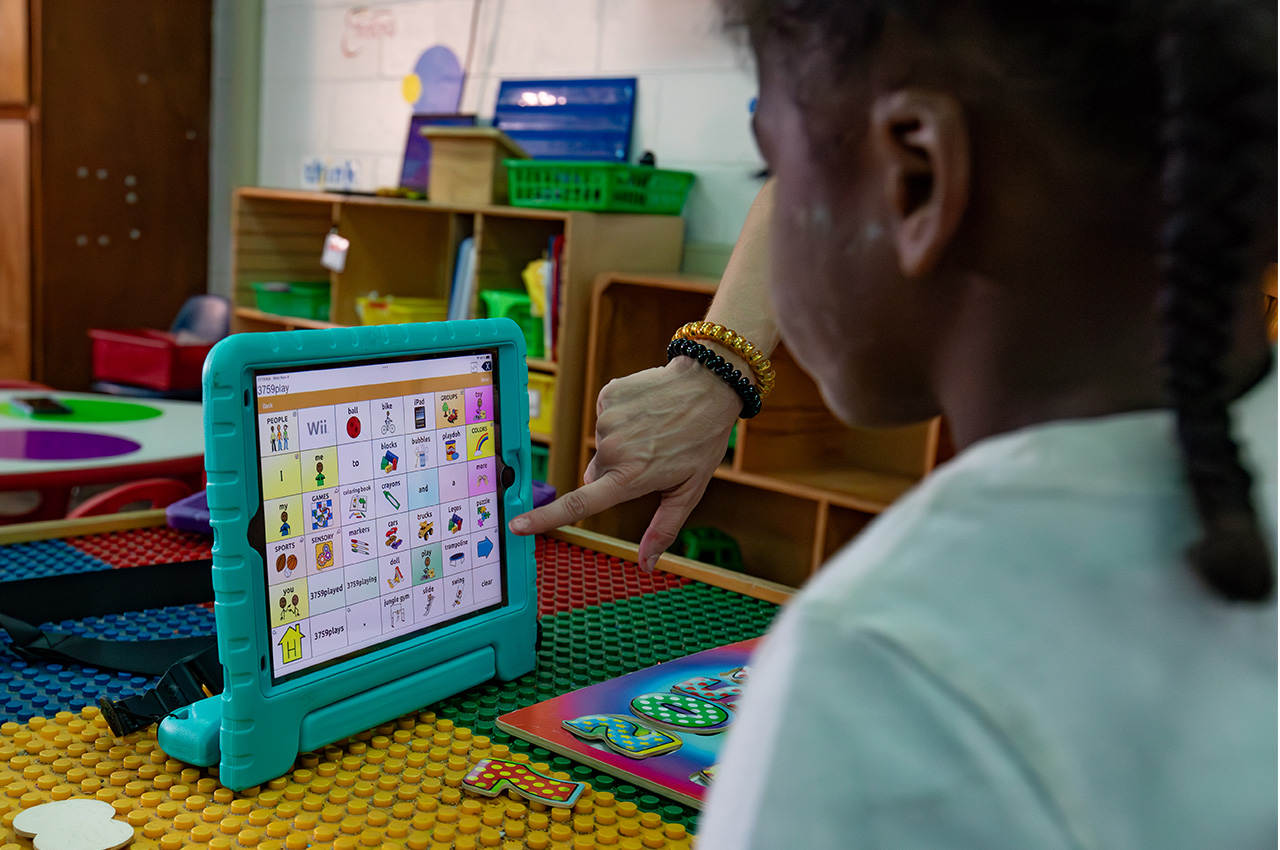
The impact extends far beyond simple requests for snacks. The technology has opened up new possibilities for family activities that were once challenging. Allen says she sometimes would avoid taking Zaiden to stores because they could be too overwhelming for him. Now, with the ability to communicate through the device, shopping trips have become manageable.
- “If I need to go to the store, I press Walmart or Publix [on the device], and he’s fine with going in there now. He knows what to expect,” Allen explains. “Sometimes he’ll press buttons for grapes, apples – things he won’t eat, but he can participate in the shopping now.”
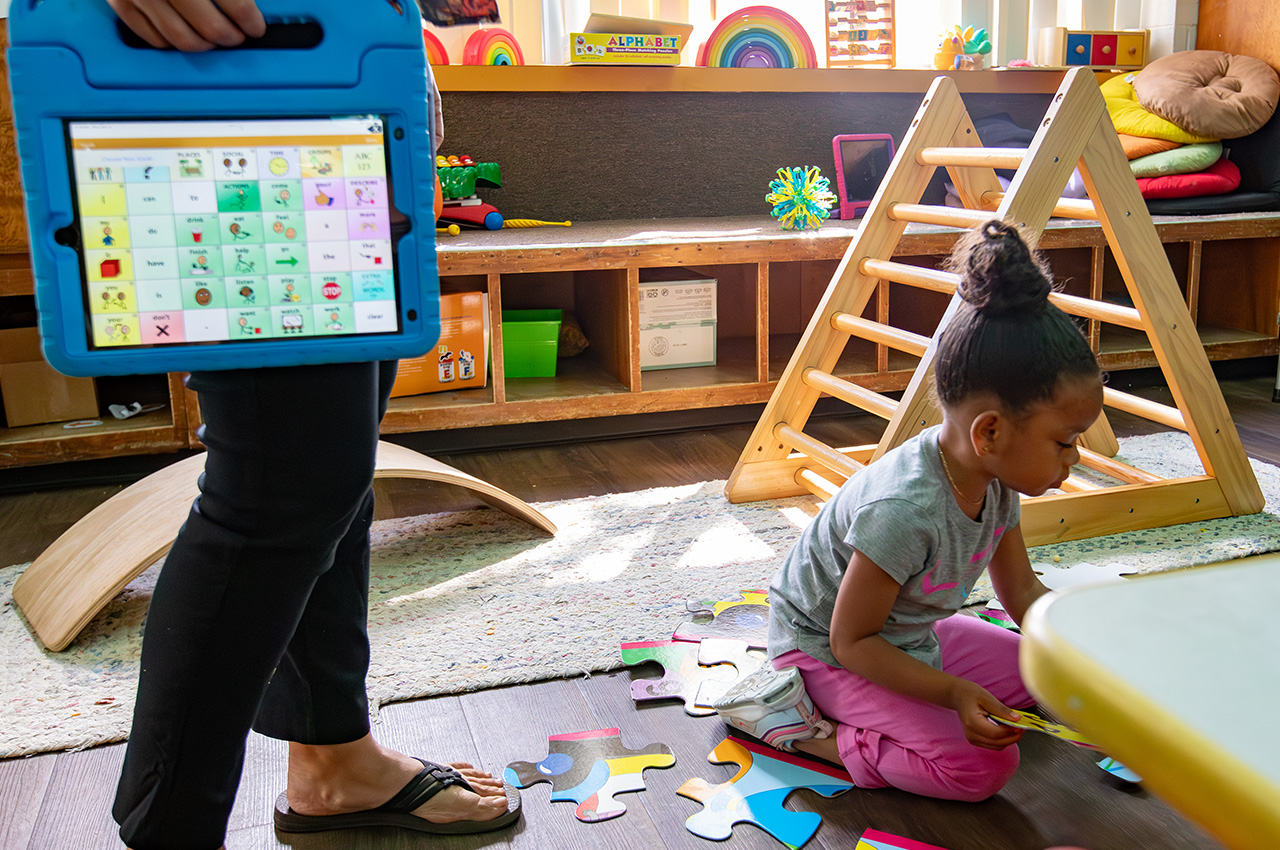
The journey to implementing this technology began with a visit from the district’s former speech therapist who introduced Havard to dynamic AAC (Augmentative and Alternative Communication) devices. Before the iPads, teachers relied on static picture communication systems – laminated cards that limited students to pre-selected options.
“The problem with that system is it’s me really guessing,” Havard explains. “What do you want? Here are the five options that I’ve seen you drawn to before. I hope it’s one of those five because that’s what I printed and laminated for you today.”
In Havard’s classroom, which currently serves 10 students who are either non-speaking or have limited verbal communication, the devices have dramatically reduced frustration and behavioral issues. Students can now express when they need sensory breaks, want to use headphones, or require assistance with tasks.
The technology has revealed capabilities that might otherwise have remained hidden. “Autism does not mean a cognitive impairment,” Havard emphasizes. “You can have both, but that’s not necessarily what it is. These children are gifted – truly.”
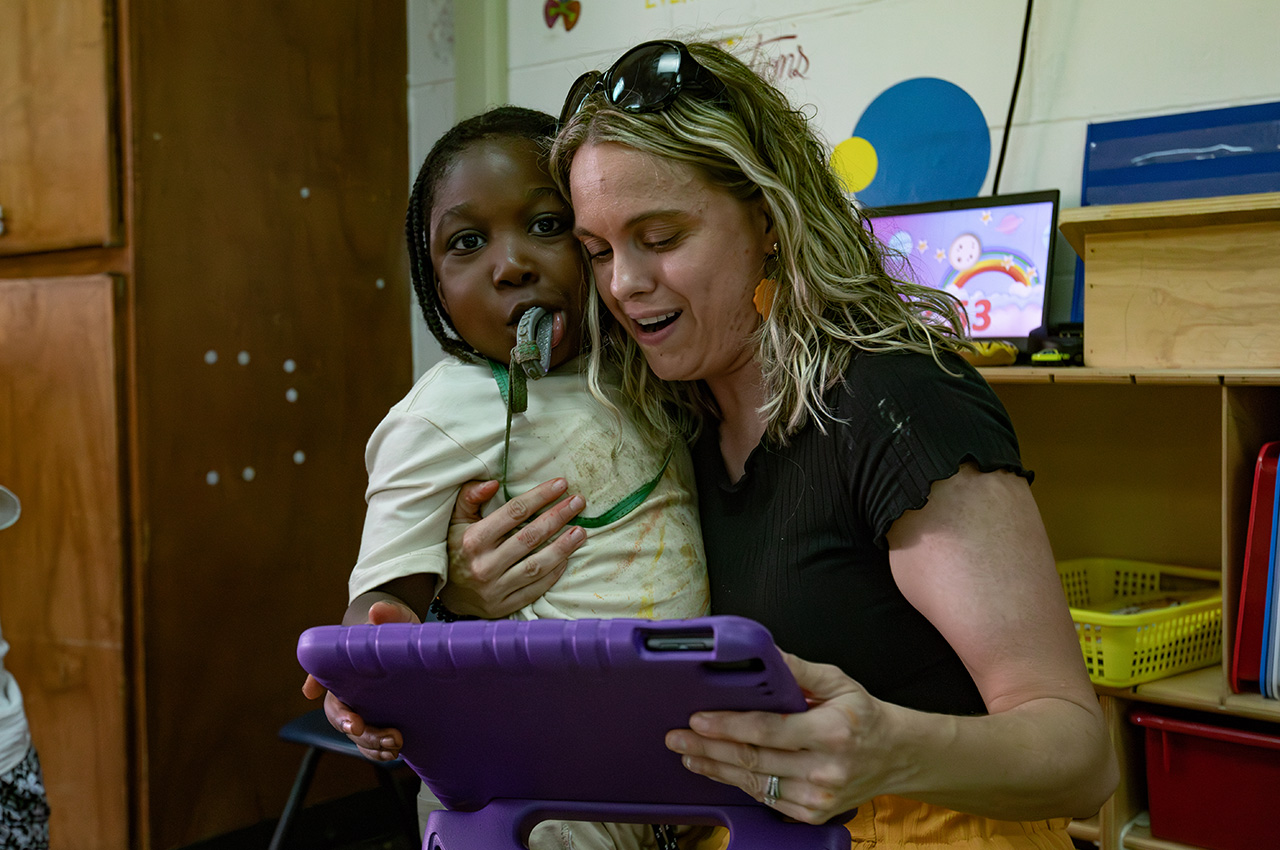
One student has begun typing words during songs, demonstrating literacy skills that might have gone unnoticed without the device. Others use the technology to coordinate turn-taking on playground equipment, proving wrong the misconception that children with autism lack interest in social interaction.
- “The brain of a child with autism doesn’t always necessarily process spoken-speech the same way that you and I do,” Havard explains. “Being able to see it visually actually activates a different processing center of the brain. In times of stress, especially, the prefrontal cortex, where we process language, actually shuts down.”
The iPads have also transformed how teachers can prepare students for changes in routine or potentially stressful situations. Rather than relying solely on verbal explanations, they can use the devices to help students process and understand upcoming events, from fire drills to field trips.
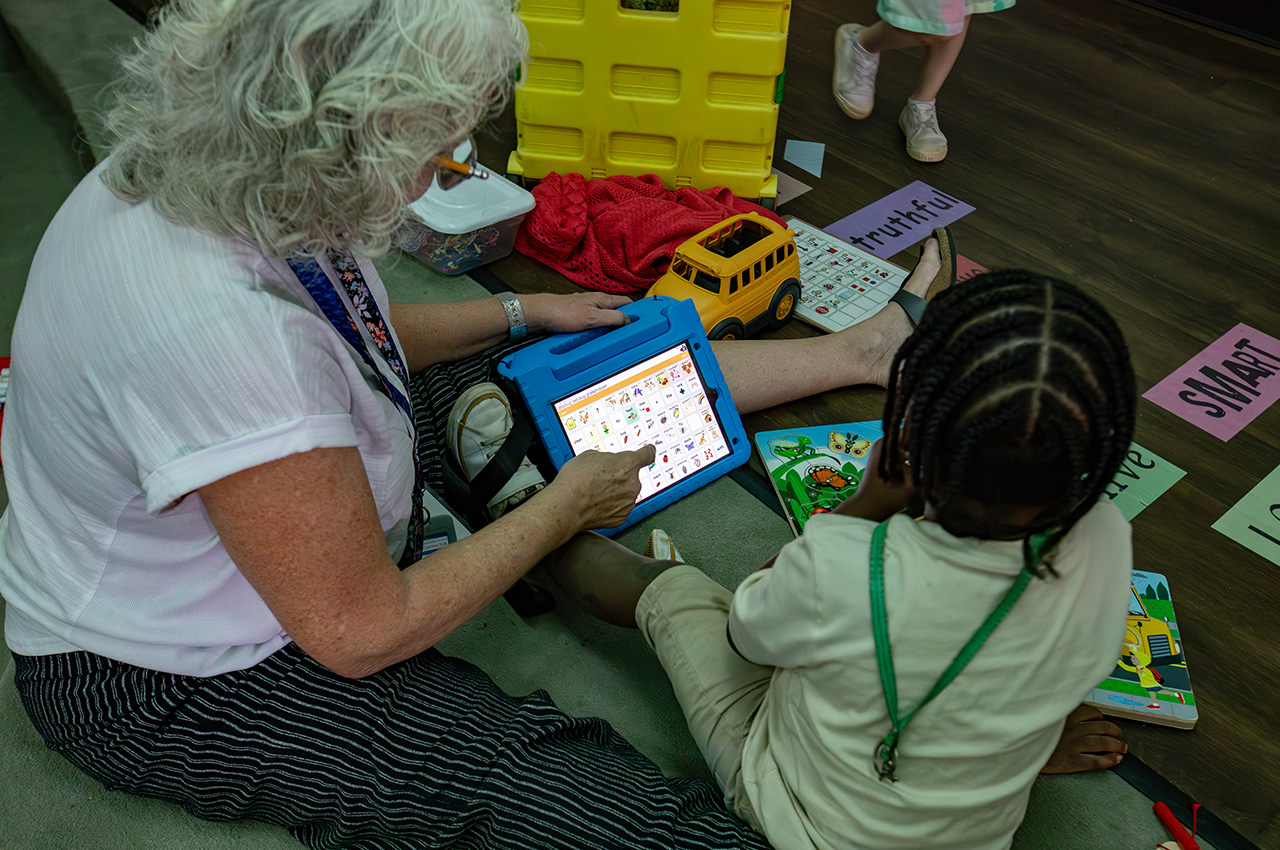
The Okaloosa County School District provides devices to students once they’re written into their Individualized Education Programs (IEPs), allowing them to take the technology home and to subsequent schools. This continuity of communication is crucial as students transition to new environments.
The need for such services has grown exponentially. Principal Bowles notes that in her 26-year career, she’s witnessed a dramatic increase in the number of students requiring communication support.
- “Twenty-six years ago when I started in a CBS classroom teaching a student just like this, we had 5 or 6 kids and we had 5 units across the district. Now it’s like an explosion,” she says.
Parents report significant improvements in home life as well. Allen describes how Zaiden now uses his device to guide his morning routine, pressing buttons for tasks like brushing teeth and washing his face. He can even express preferences about his clothing choices – a level of autonomy that wasn’t possible before.
The success extends to peer interactions too. Zaiden has begun having conversations using the device with other children, recently asking a friend if they had any pets. When the friend said no and asked Zaiden the same question, he responded with “zero” – a simple exchange that represents a breakthrough in social communication.
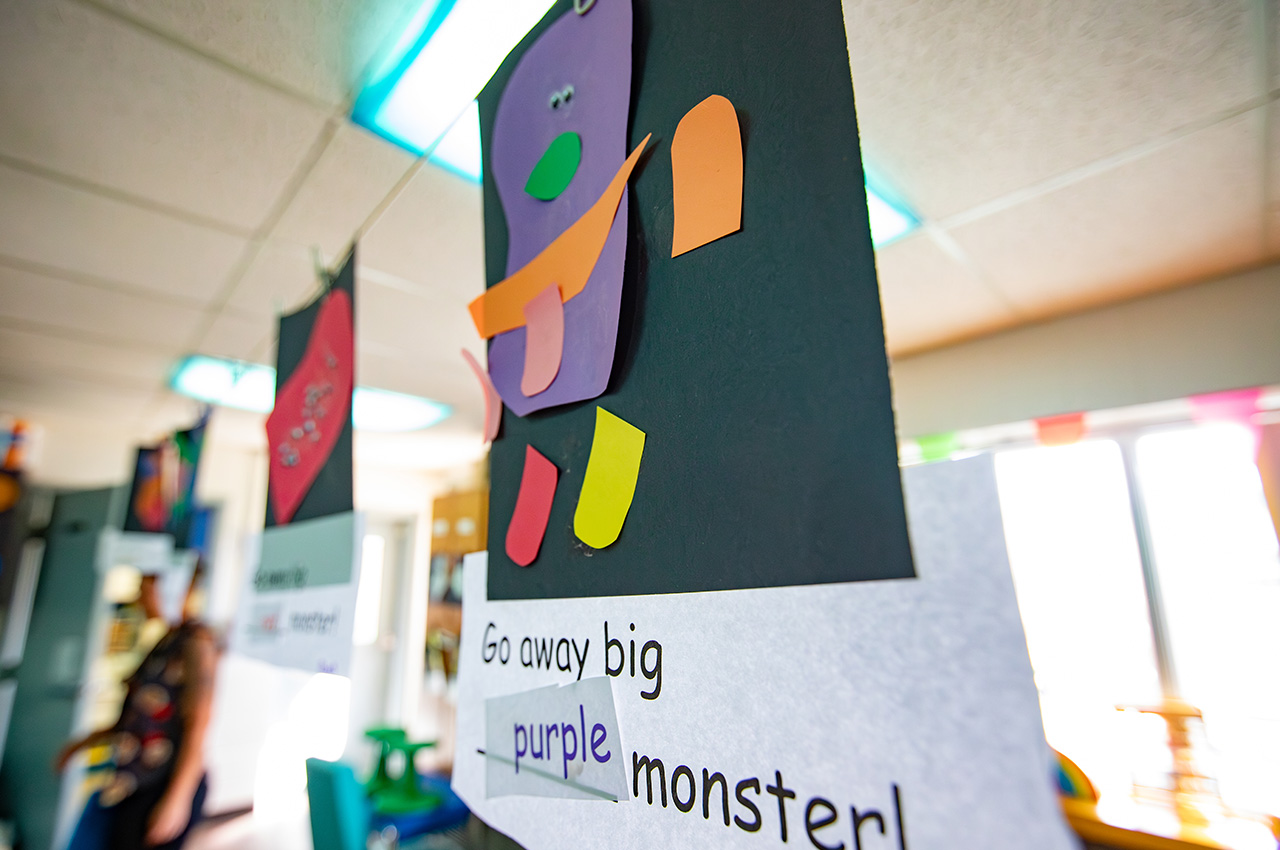
For Allen, whose son has now transitioned to Northwood Elementary, the impact of Southside’s program extends beyond his time there. “Miss Liz set the standard so high that I wouldn’t expect anything less from anyone else,” she says. Her message to other parents of non-verbal children is simple: “Try it. If I would’ve said no, then where would we be now?”
Havard emphasizes that while everyone hopes for verbal speech to develop, the devices don’t inhibit that process. “All of the research shows that this does not prohibit spoken speech,” she says. “If anything, it is helping the neural pathways in the brain connect faster.”
As the program continues to expand, Bowles and her team are working to ensure more teachers across the district receive training on these communication devices. The goal is to make this technology accessible to all students who could benefit from it, particularly as the school continues to grow and adapt to the increasing need for these services.
- “You can’t put a price on someone’s quality of life,” Havard says. “It is less money to provide these devices than to have to hire behavioral coaches and one-on-ones because a child is labeled as a behavior problem when they’ve spent years trapped in their own mind.”
At Southside Primary, the focus remains on early intervention and communication, setting students up for success in their educational journey and beyond. As Allen watched her son transition to elementary school, she reflected on their time at Southside: “I actually didn’t want Zaiden to leave this school at all. I cried so much. Miss Liz is such a blessing.”

